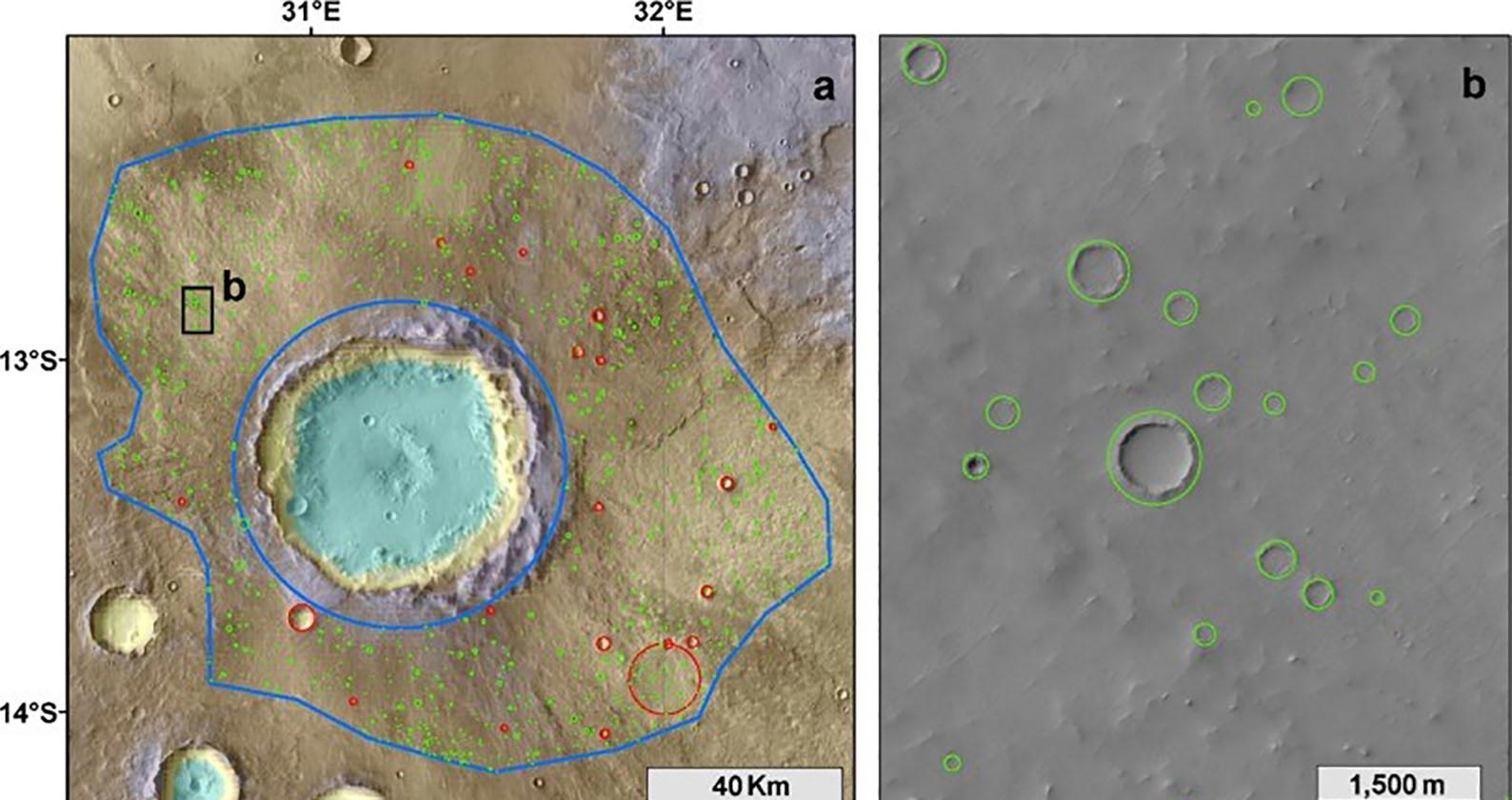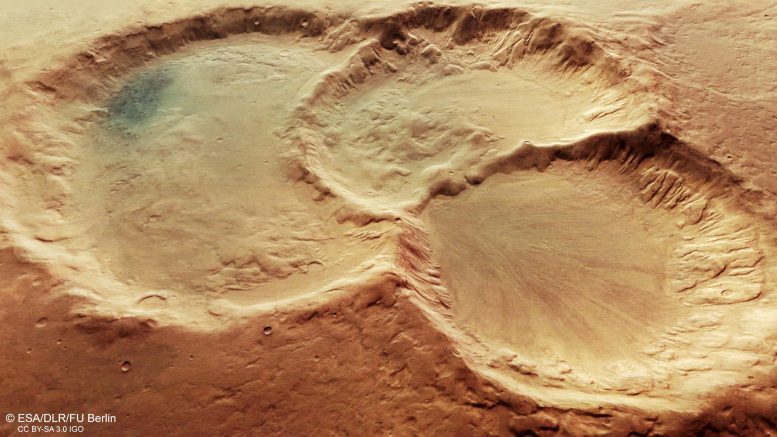According to a new Curtin University study, the frequency of asteroid impacts that generated impact craters on Mars has been stable over the last 600 million years.
The research, published in Earth and Planetary Science Letters, examined the creation of over 500 huge Martian craters using a crater recognition method created at Curtin that automatically counts the visible impact craters in a high-resolution picture.
According to Dr. Lagain, measuring impact craters on a planetary surface is the only method to correctly date geological phenomena such as canyons, rivers, and volcanoes and anticipate when and how large future collisions will be.
Despite earlier studies indicating increases in the frequency of asteroid crashes, leading researcher Dr. Anthony Lagain from Curtin’s School of Earth and Planetary Sciences said his research indicated they did not fluctuate much over millions of years.
Dr. Lagain said that the erosion of plate tectonics deletes the planet’s past on Earth.

Providing a Better Picture of Asteroid Impacts on Mars
The crater identification technique gives us a comprehensive picture of the development of impact craters, including their size and number and the time and frequency of the asteroid impacts that created them.
Previous research had shown that the generation of debris caused an increase in the timing and frequency of asteroid impacts, according to Dr. Lagain.
When large things collide, they shatter into bits or debris, which is considered to affect the formation of impact craters, as stated by Dr. Lagain said. The findings indicate that debris is unlikely to have influenced the creation of impact craters on planetary surfaces.
Professor Gretchen Benedix, co-author and project leader, said that the program might be extended to function on other planetary bodies, including the Moon.
Professor Benedix said that thousands of lunar craters can now be automatically dated, and their creation frequency may be examined at a greater precision to understand their development. He added this will provide us with vital information that may have future practical implications in nature preservation and agriculture, such as detecting bushfires and categorizing land usage.
Reference: “Has the impact flux of small and large asteroids varied through time on Mars, the Earth and the Moon?” by Anthony Lagain, Mikhail Kreslavsky, David Baratoux, Yebo Liu, Hadrien Devillepoix, Philip Bland, Gretchen K. Benedix, Luc S. Doucet and Konstantinos Servis, 7 January 2022, Earth and Planetary Science Letters.












Leave a Reply